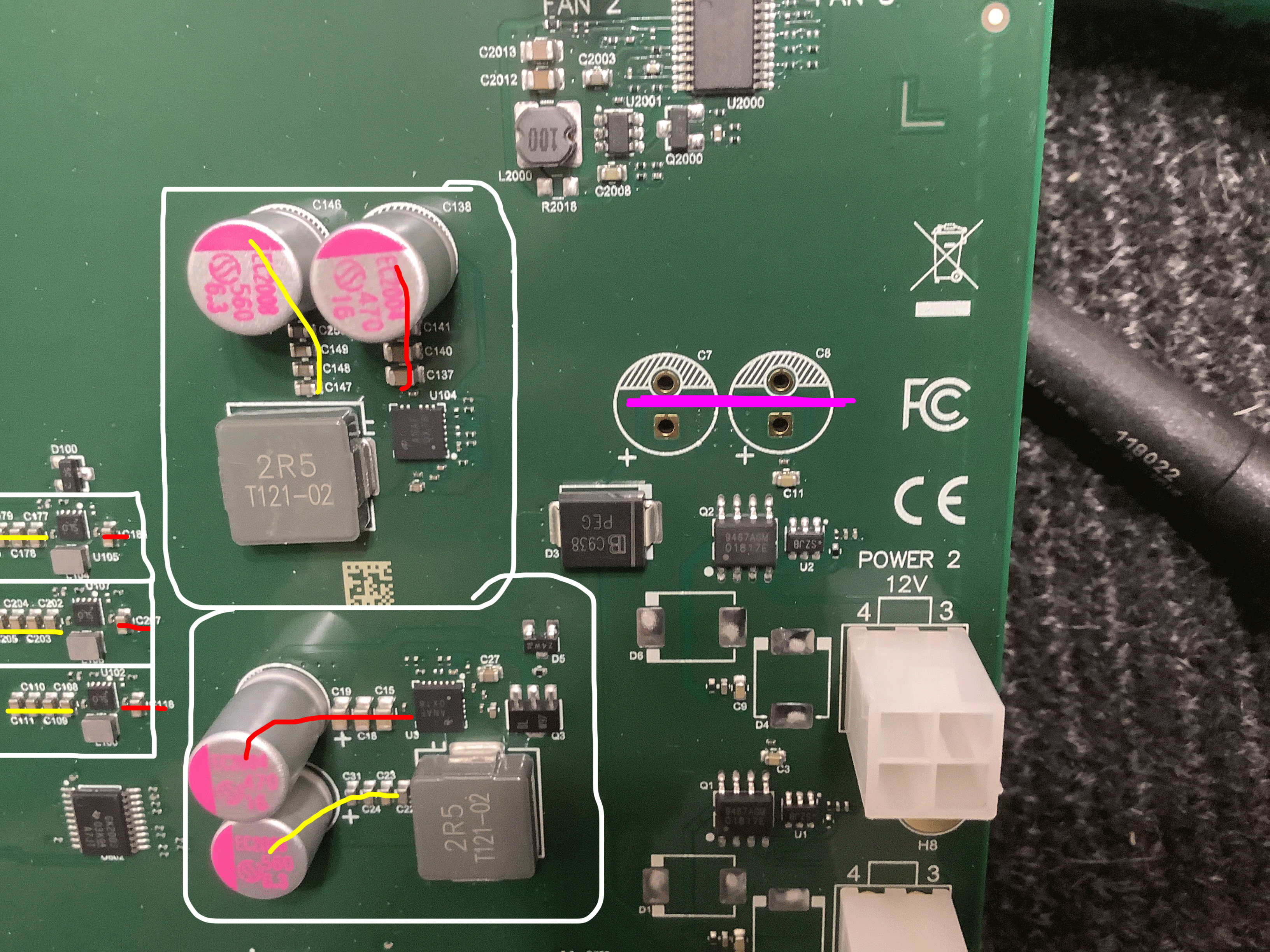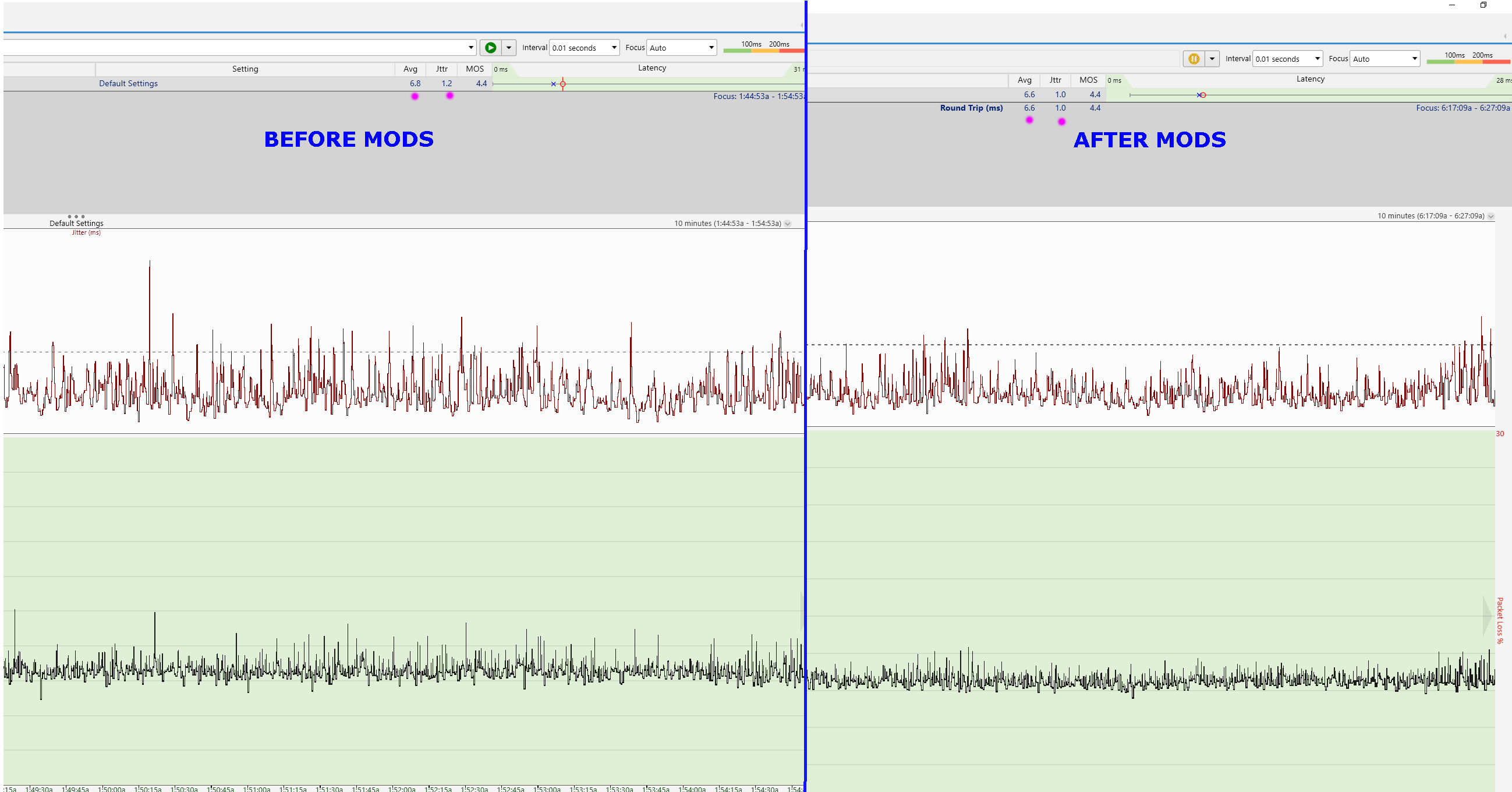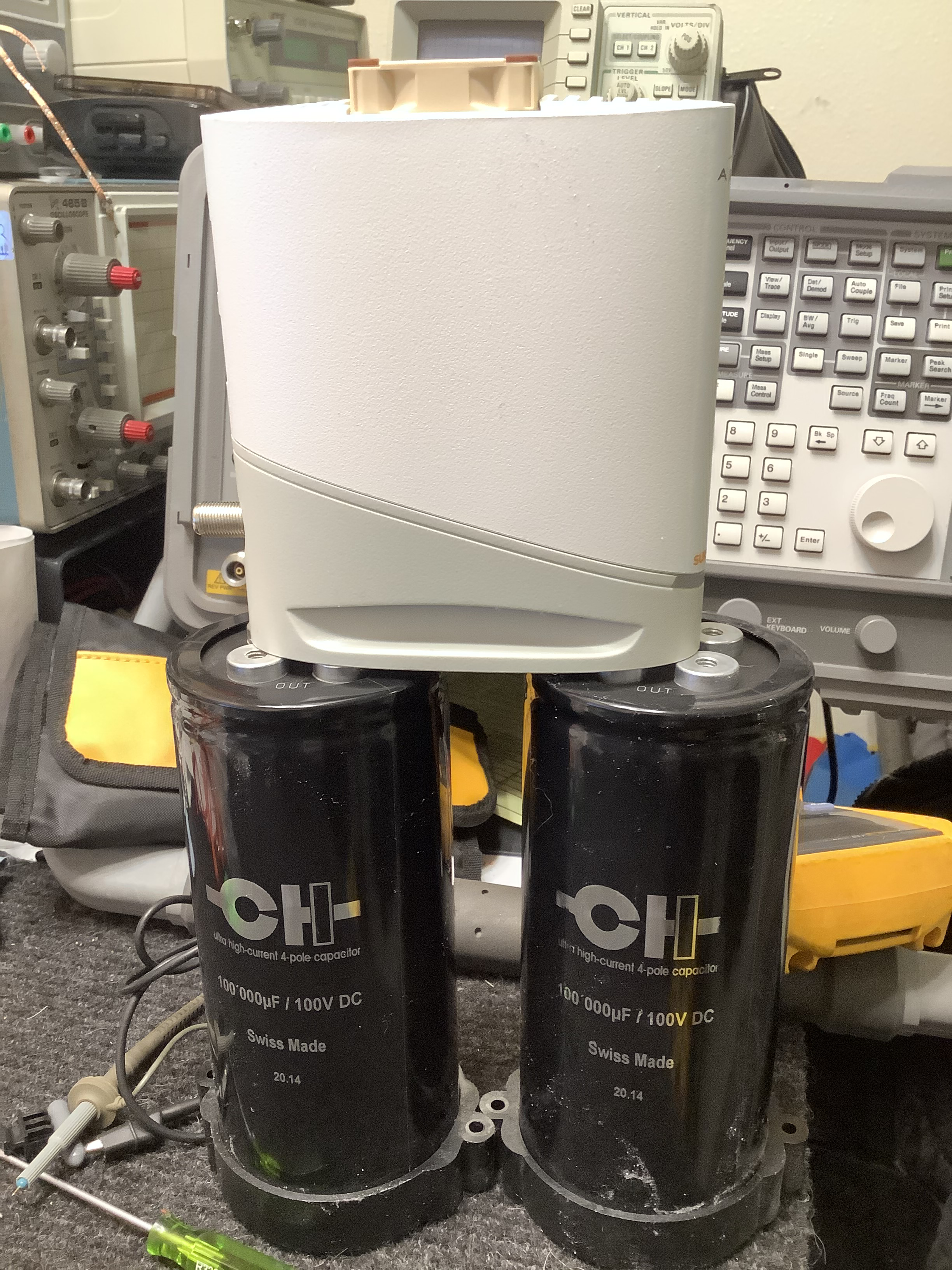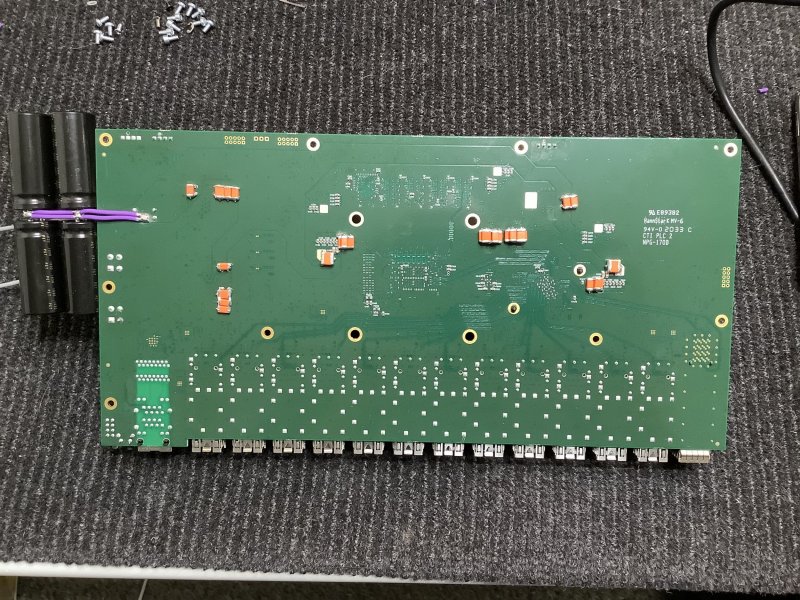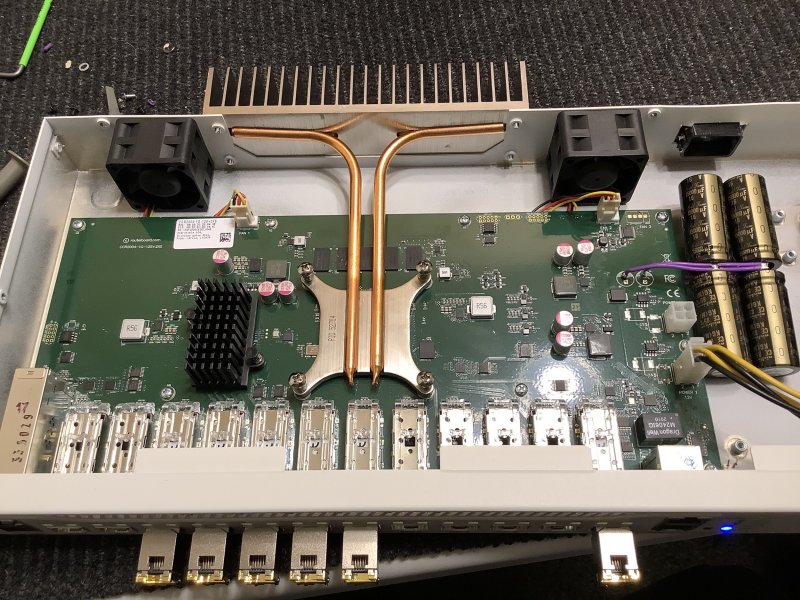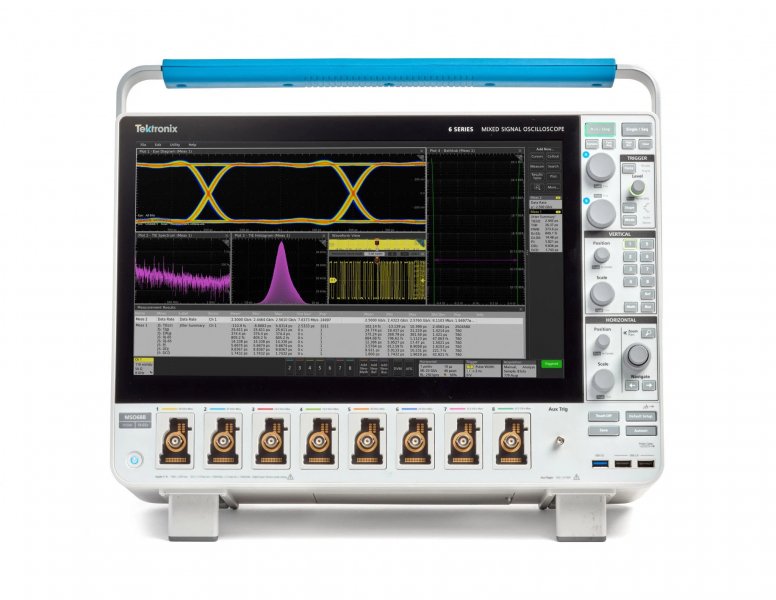I have completed the first rounds of ruff exploratory mods on the modem.
I have been doing mods on modems and routers for networking performance improvements for a really long time. My first one was in 1991.. SO I am celebrating 30 years of modding modems with this mod.. These mods were for networking performance and not really for SQ improvements tho. This long experience doing this created a lot of knowledge of cable modem technology.. Its stunningly gnarly. DOCSIS 3.1 is crazy..
To understand why my mods matter and what they accomplish a bit of understanding of a cable modem system is a good idea. I will try and explain it in a easy to follow manner.. You could skip this..
_________________________
A cable modem uses a very complex way of sending VAST amounts of data thru a coax. Think of a light bulb going on/off. That on/off pattern can convey a message. Dots and dashes of Morse code can communicate really well using just a dot/dash or a on/off. Now if you had 2 light bulbs at the same time, you could communicate twice as much or twice as fast. QAM Modulation uses a frame of 256 light bulbs at once and these lights go on/off incredibly quickly.. A DOCSIS 3.1 cable modem typically uses 32 channels of these 256 light bulb frames. This is a whopping 8,192 light bulbs going on/off millions of times a second. The newest modulation has 4096 light bulbs per "frame", this is OFDM. A gigabit, and soon multigigabit, connection combines the 32 QAM 256 channels and the OFDM channel. There can even be 2 OFDM channels. The modem then keeps track of aprox 17,000 modulated points each turning on/off millions of times a second. Any of these lights could get blocked by noise and fog, delayed more then the others or skewed in big groups. There are not really light bulbs, its just a analogy. They are modulated points.
A nice tester showing a "constellation" of the OFDM 4096 points.. They look like little lights..
Its a technology wonder. Its incredible it works at all.
If your interested in a deep dive into DOCSIS, like PHD level deep dive off the deep end..
This is a nice starting off point..
So.. your Tidal byte comes along to the cable company. It reaches a
CMTS ( Cable Modem Termination System ) which is a million $ device that takes your byte of music and spreads it out over all those 17,000 points. It does this with all sorts of crazy math and the whole thing has to be tolerant of all sorts of crap and noise between you and the CMTS. The math involved is staggering... Ultimately a spectrum of carriers ends up on the coax.. It goes thru all sorts of junk between the CMTS at the cable co head end all the way to your house and thru your wires and splitters to your cable modem..
The cable modem then has to sync up clocks so that every light bulb, all 17,000 of them, going on/off millions of times a second, is EXACTLY locked. It has to error correct this massive bit stream. It has to watch for just the frames intended for YOUR modem because it also has typically 300 other people on it at the same time sharing these same sets of lights.. It then reassembled your byte from Tidal from all those modulated points. It then also does error detection and correction of your Byte from Tidal. It buffers and then clocks and spits out the byte thru the ethernet port..
_______________________________
OK with that out of the way.....
Modems are made as cheaply as possible. They just need to pass CableLabs certification. ZERO extra engineering is done beyond that.. Good enough,, is the standard.. SO its pretty easy to improve performance.. Jitter, RF noise, Power supply stability are all of no concern at all during design beyond "does it work or not...
I have done all this before..
So I ended up adding almost 1000uF to the 3.3 V supply. This is because its really the main supply. The BCM3390 chip which does all the demodulation - it wacthes the 17,000 lights - and does the decoding and even clocks the ethernet ports. The power supply caps there originally were aprox 0.1uF. So I increased this filtering by 10,000 TIMES. This completly eliminated any RF on the supply because I used tantalum caps. This also stabilized the supply very seriously. As its A/D section that does the decoding and the D/A that creates the upstream lights is all done from this supply, doing this vastly helped clean up the A/D and D/A sections. Also as the decoding and stuff on the CPU goes on the supply stays very stable in voltage making the D/A and A/D far more accurate. The light bulbs became far easier to see and it made the outgoing lights more precise. AGain the "lights" are a anology, they are really modulated points..
I then turned to the RF section. This is a preamp and a amp.. This is a critical section as any noise across the whole band from 5Mhz to 1200Mhz causes issues.. There are 2 chips in this section. One a preamp and one a amp. the 5V supply feeds all this. I dropped 660uF of tantalum on this. It had the same 0.1uF to start with. So I increased the filtering by 6,600 times. Again the result was no noise I could measure with the spectrum analyzer. A 35db reduction in RF noise.. ALSO there is a transmitter chip here. Its a amp.. This amp transmits the 17,000 light signals back to the cable company. Its a damn important transmitter. Just like with a audio amp, big caps stabalize the amp and make the supply much quieter in operation. So the amp has a better noise floor and more precise modulation.
I hit the other supplies even tho they were not as important. They all got a 330uF cap. So 3,300 times better filtering...
On the 12V input side.. Sadly.. There is ZERO room for a good audio cap inside the case. So this will need to be done outside the case from a nice linear supply. WHat I did do was extreme tho. I stacked up tant caps for a total of 2000uF across the 12 supply. 2000uF of tantalum is just excessive and overkill, but, its all about overkill right ?
SO.. Overall the unit now has vastly reduced RF noise. What is left is radiated by the coils in the voltage regulators and this seeps back into the electronics.. I will think about small shields...
OK SO....
Indeed it effected performance.. The cable modem gained 3db of S/N ratio reported on its status page. That was the biggest improvement in S/N I have seen in any mods. Also, interestingly signal lock when firt booted is now clearly faster. The corrected errors are less. The MER is lower.. No doubt because of the vastly lowered noise floor for A/D and D/A...
Jitter and latency performance improved. This is because it has a better connection to the CMTS and has to do less error correction.
The networking improvements are minor. Like 10%. But aren't we all after that last 10% ?
I know someone way up on the technical side at my ISP and I asked him to look at it from their side as they have way better tools. What he saw was the best numbers he had seen on any device. This is normal for me tho, this happens with any modem when modded correctly. Its easy actually as they start out as crap...
SO does any of that matter ? In normal use ? Not really. Not for any normal people. That is why cable modem makers dont do it. I dropped $100 in tant caps into it and that had no real effect for any normal use.. YES it might work better in situations with really bad connections.. But thats about it.. I do it, well,,,, just because I can,,, hahahaha... Its fun having the best cable modem on earth...
OK so I don't know on sound quality yet.... That will have to come later... I need to do the router as well and then swap in both and really spend time doing a A/B....
Chart showing jitter and latency before and after..
Mods... Sorry that the mods are a bit sloppy. I was in a hurry and these are not final anyway. Its exploratory.
The caps worked out great on the back side. Remember a metal heatsink covers this area and it almost touches the caps. So there is no room back here. The heatsink being misaligned is how it came to me..
Again, don't beat me up for neatness.. Hey it works... hahahahaha...
SO I have been testing it and I will let it go for a bit longer and continue to test...
Netx up the router.. I am still pondering what all to do to that.. LOTS OF ROOM....
I need some huge audio caps.. Like 16V.. I have 40mm to work with for dia.. I want to build up a bunch of them to like 100,000uF.. What are good caps for this on a switch/router ? WHat is the current fav ? Hopefully something I can get in stock at Mouser or someplace..











